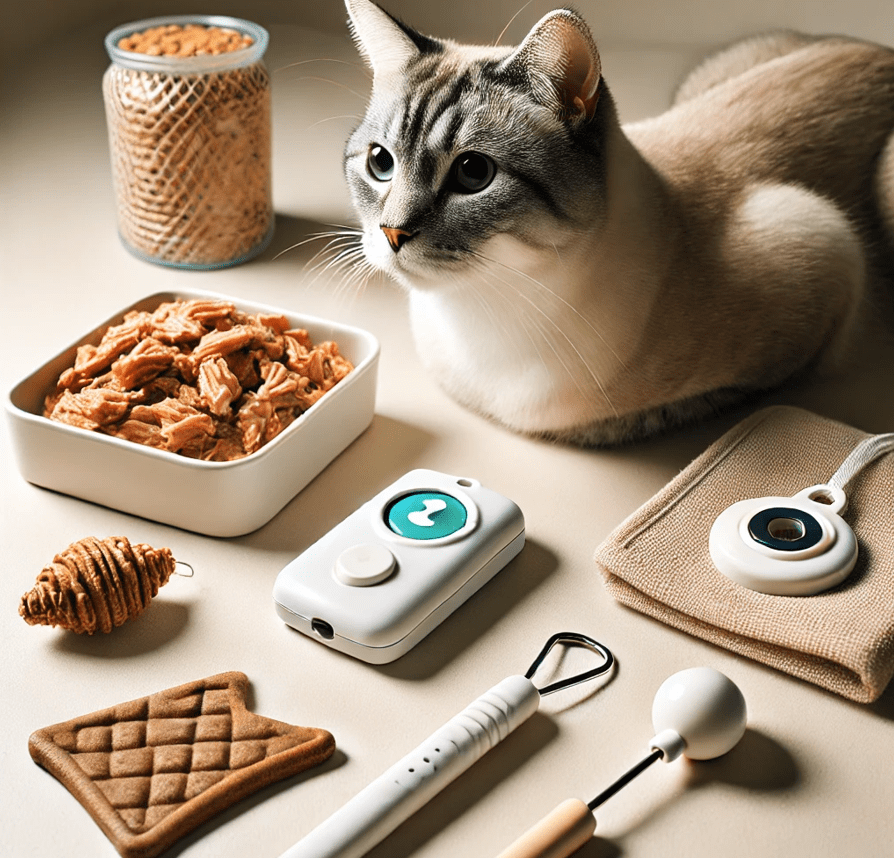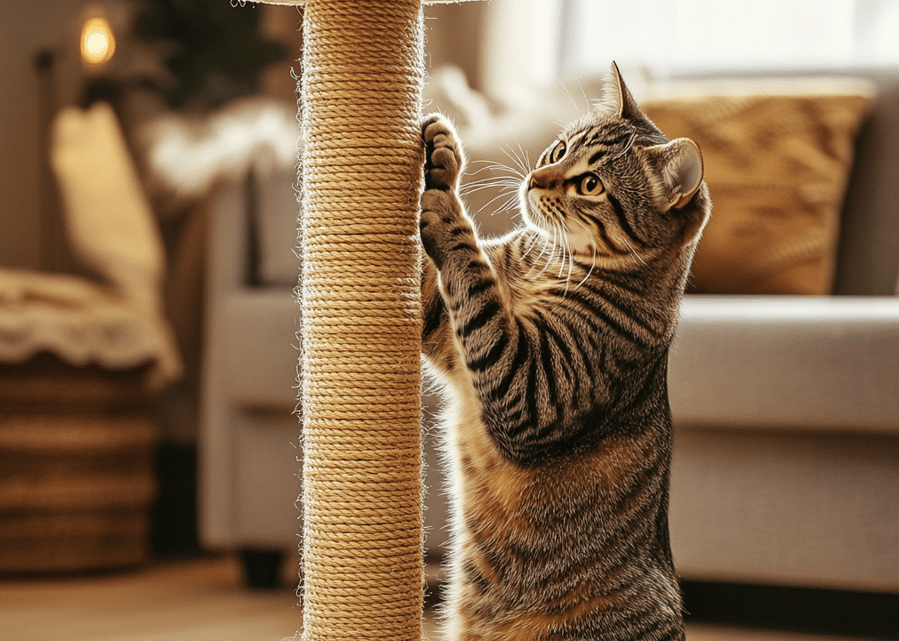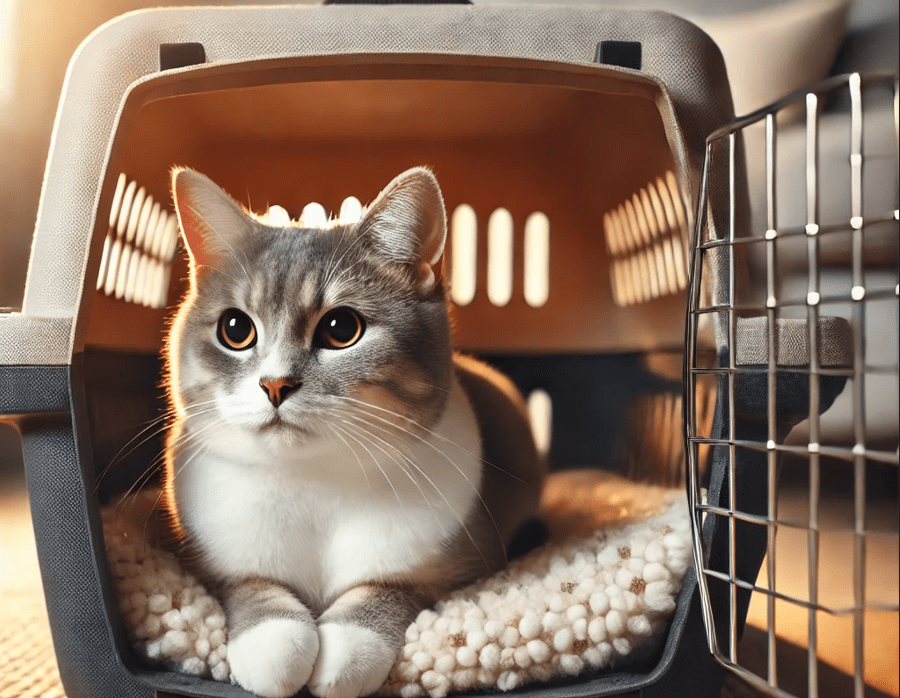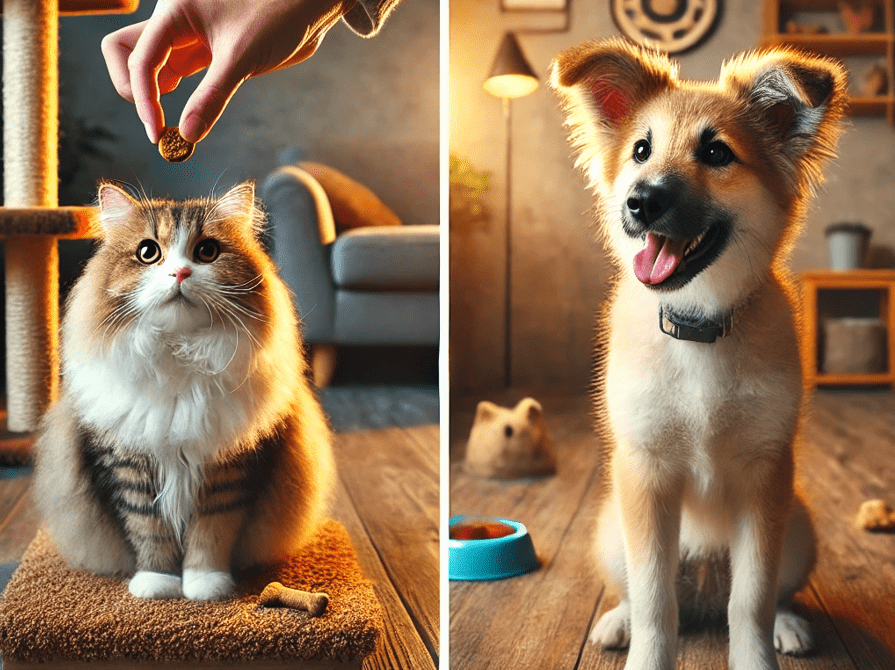
Many people view cats as self-reliant animals who maintain their personal choices. Although cats operate according to their own impulses they possess strong intelligence and can easily understand various behaviors. This article shows you the steps to become a pro cat trainer. This guide helps you train advanced cat techniques to make strong connections with your cat while teaching advanced skills. Discover the secrets of how to train your cat like a pro and transform your feline friend into a well-behaved companion with expert tips and techniques!
Training a cat needs continuous effort and good understanding combined with steady response. In this article, we’ll cover:
The Science of Cat Behavior: Study basic cat behavior to understand feline actions and apply this understanding successfully.
Essential Tools for Cat Training: See what tools assist Both Cat Training and Environment
Step-by-Step Training Techniques: Our article explains training methods one exercise at a time using simple instructions beginning with fundamental commands and concluding with demanding tricks.
Troubleshooting Common Challenges: Find solutions to common issues like lack of interest, distractions, and stubbornness.
Building a Stronger Bond Through Training: Training forms a strong connection between you and your cat while enhancing their happiness.
After reading this content you will discover every necessary tool to train your kitty successfully. Let’s get started!
The Science of Cat Behavior: Understanding Your Feline Friend
First we should examine the reasons cats exhibit specific actions. Unlike dogs, cats do not form social groups as natural predators. As natural solitary hunters their main motivation does not align with pleasing human relationships. Cats act on their own desires to investigate their surroundings while safeguarding their comfort.
Cats adapt their actions based on the results they receive during operant conditioning. Giving rewards for good cat behaviors produces the best results during training sessions. When you punish a cat during training it breeds fear which defeats the purpose of training.
Cats display strong sensitivity to their environment when learning and performing actions. Cats stay sensitive to what is happening around them and this feeling impacts their capacity to learn. A peaceful area with minimal background activity serves as the best training environment for cats.
Essential Tools for Cat Training

To become an expert cat trainer you must gather these pieces of equipment first. The required tools will enhance the learning experience for you and your cat during training sessions.
High-Value Treats: Cats respond better to training when they are offered favorite rewards. Check several kinds of treats to determine what your cat prefers. Frozen dried chicken or tuna flakes covered in fragrances impress cats as training rewards.
Clicker: The clicker works as a small device that produces a definite clicking sound. When you press the clicker at the precise moment your cat displays the desired behavior helps them quickly know what actions please you.
Target Stick: Target Stick refers to a control wand that holds a small tip or ball at its end. You can use this tool to move your cat toward certain positions or positions to achieve desired behaviors.
Patience and Consistency: These important values support effective cat training even though they do not involve physical devices. Each cat needs time to absorb information so practice patient teaching methods with them.
Step-by-Step Guide to Advanced Cat Training Techniques
After learning fundamental training your cat will accept basic and advanced training to please your friends and provide better life experiences for your pet.

1.Teaching Your Cat to High-Five
Teaching your cat how to high-fives forms a basic yet enjoyable training method. Here’s how:
Step 1: Give your cat a treat to smell from your open hand.
Step 2: Lift your hand slowly towards your cat’s head area. Cats normally lift their front feet toward new objects.
Step 3: When your cat touches your hand use the clicker or verbalize the “woman’s touch” action while offering the reward.
Step 4: Keep performing the steps while lifting your hand upward for more practice.
When your cat reaches your hand consistently you should include the verbal cue “high-five” during training.
2.Teach Your Cat to Use the Toilet as a Special Training Process
You can successfully teach your cat to use the toilet as an alternative to conventional litter boxes. The advanced toilet-training process demands both time and careful actions.
Step 1: Place the litter box beside the toilet as your first lesson.
Step 2: Place your sturdy platforms under the litter box to lift it slowly to the height of the toilet.
Step 3: Put a special training seat that matches the toilet shape in place of the litter box.
Step 4: Slowly take away the litter from the toilet seat as your cat learns to use the bathroom device.
3.Walking Your Cat on a Leash
Using a leash enables you to give your cat supervised outdoor exposure. Follow these steps:
Step 1: Let your cat get familiar with the harness first inside your home. Allow your cat to try the harness at first but only for a limited time before giving them their favorite treats.
Step 2: Your cat should wield the leash around your home to accustom itself to the apparatus.
Step 3: In this step teach your feline to go inside with you by rewarding them with treats and walking practice.
Step 4: Your next step should be to take your cat outside but choose a peaceful safe location.
4.Help Your Cat Return to You through Call Training
Your cat needs to follow your command at all times especially if you are facing an emergency. Here’s how:
Step 1: To teach this skill choose the verbal commands “come” or “here kitty.”
Step 2: To begin training repeat the cue while holding a reward item. Your cat needs immediate reinforcement when they approach you.
Step 3: Practice the lesson with your cat in one room then move to others and increase the distance between both of you.
Step 4: Progressively decrease treat rewards while continuing scheduled positive feedback.
Troubleshooting Common Challenges

The path to train a cat may face many difficulties. These are typical training problems and the ways to handle them.
Lack of Interest: When cats act uninterested during training sessions try both stronger rewards and shorter training periods. Keep training fun and engaging.
Distractions: Choose a training location free from disturbances that your cat knows well. Present small distractions to your cat once it displays training progress.
Stubbornness: Some cats display greater self-reliance than others in their nature. Continue practicing with patience and stay focused while recognizing each minor achievement your cat makes.
Training creates new abilities for your cat while enhancing your connection to them. Spending quality time with your cat and learning their behavior along with celebrating their achievements will make a stronger bond and keep your cat healthy.
A Short Story: How Luna Learned to High-Five

Luna the tabby enjoyed basking in sunlight but her focused nature resembled normal feline traits. Even though Sarah wanted her cat to perform tricks she believed the task was unreachable. She made up her mind to experiment with the trick. The owner selected the basic “sit” directive and got Luna to perform it by offering her favorite tuna snacks. Luna unexpectedly learned the instruction right away. After Luna learned the basics Sarah began training her to perform a high-five trick. She needed time and practice before being able to perform high fives with ease. The training achievements strengthened the bond between Sarah and Luna and amazed her friends.
Final Thought

You can train your cat professionally when you apply proper methods to the process. You can train your cat various skills successfully if you study its behavior patterns while also employing suitable training tools and following clear teaching methods. Stay patient while keeping your actions steady and optimistic in every session. You will obtain a properly trained cat while deepening your relationship with your pet.
So, what are you waiting for? Begin training your cat now using treats and a clicker while having your pet at hand. A small investment of time and work will truly surprise you with what your cat can do.




